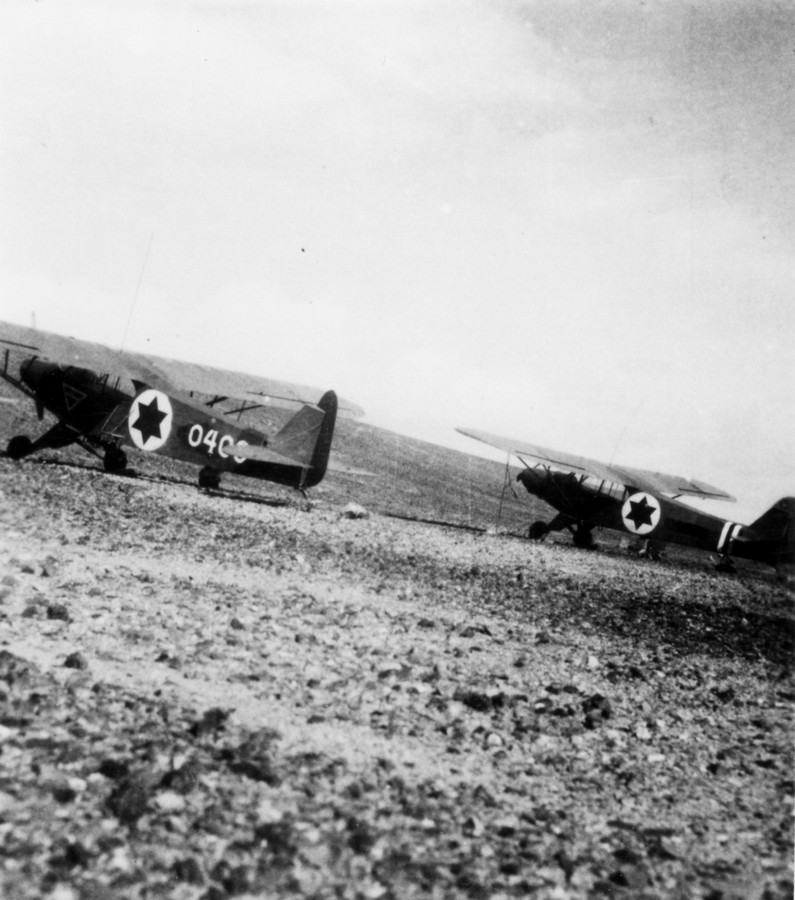Airborne Supply
Provisions to the Negev were sent via light aircraft once Palmach forces failed in opening a safe corridor to the Negev. Cargo planes landed in Revivim and the provisions were transported to the settlements.
The air route became very important once the land route was blocked, especially when it came to transporting weapons, munitions, officers, professionals and evacuating wounded and captives. The landing strips were lengthened in order to enable the landing of large cargo planes. Light aircraft flew regularly from Tel-Aviv to Nir-Am and 2 engine 'Rapid' planes which were capable of carrying up to 450 kg of provisions for the besieged Negev settlements of Kfar-Darom, Beit-Eshel and Nevatim. 'Dakota' aircraft, capable of carrying up to 3 tons provided for all of the Negev settlements. The air crafts could only land in the remote Revivim airfield, located in the southern point of the area under the command of the 8th battalion, who couldn’t provide suitable unloading teams and the transport of the supplies to Ruhama and Dorot involved spending a lot of fuel due to the sandy terrain.
The lighting installed on the runways at the end of June 1948, finally enabled night flights. Further landing strips suitable for heavy aircraft were laid in isolated Nevatim on the 1st of June, in Dorot on the 8th of June and between Ruchama and Shoval on the 22nd of August.
The lighting installed on the runways at the end of June 1948, finally enabled night flights. Further landing strips suitable for heavy aircraft were laid in isolated Nevatim on the 1st of June, in Dorot on the 8th of June and between Ruchama and Shoval on the 22nd of August.
















